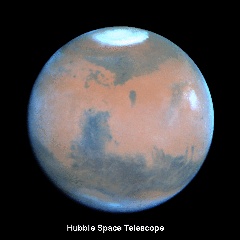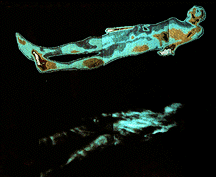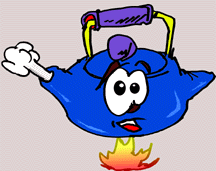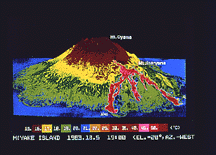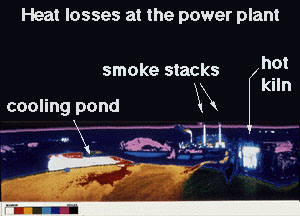Exploratour - Life in the Solar System
Click on image for full size
STScI and NASA
In the past, Mars was much different than it is today. Liquid water used to flow on the surface, as shown in this picture. Both the Earth and Mars should have been frozen in their early history because the sun was weak at first, but both planets show that water was flowing, which suggests that they both must have had lots of air in place to keep the surface warm. (This effect is called the "greenhouse effect"). In this environment life may have once thrived.
The atmospheres on both planets came out of volcanoes. There were not many volcanoes on Mars, and those volcanoes were never very active. This level of activity is very different from that of the Earth, where volcanism continues today.
The volcanic eruptions probably produced a lot of water. The water eventually fell to the ground or into the oceans. Mars is small, and so cooled off very rapidly. Scientists estimate that the water of Mars was absorbed into the ground and frozen like tundra in the Canadian northwest. Read about NASA's attempts to understand the environment of Mars by leaving this tour and linking to the Exporatour: NASA's Exploration for Life at the bottom of this page. Read more about the comparative evolution of Mars and Earth by linking to the Exploratour on the Evolution of the Solar System.
This is page 7 of 20


